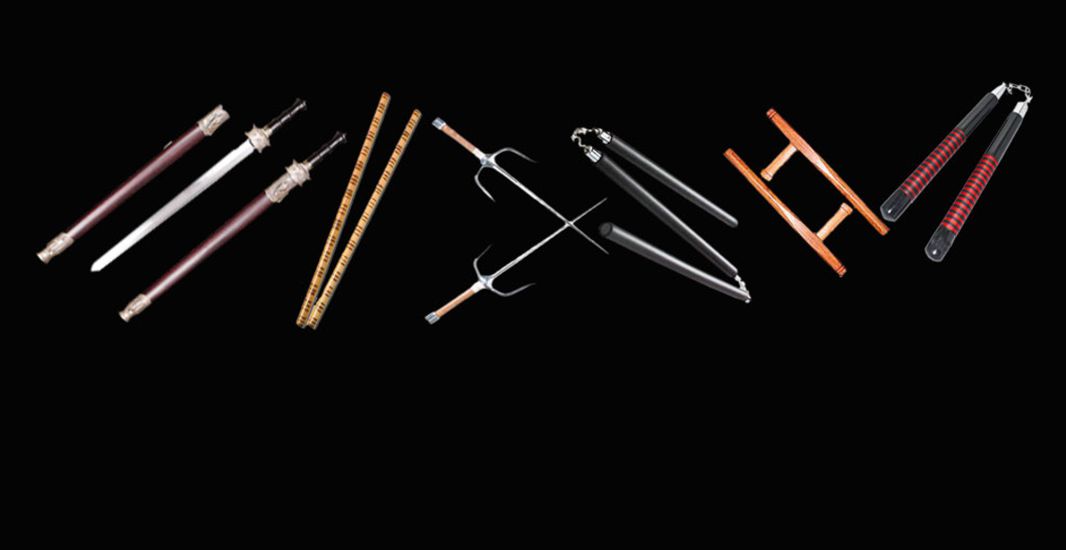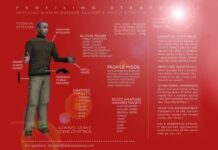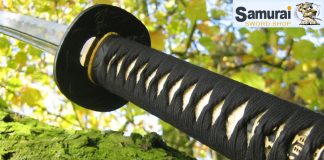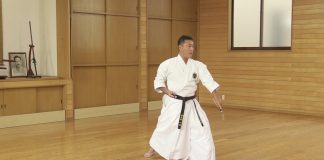In the 17th century there was no choice. The island of Okinawa was under Japanese rule and there existed a national ban on weapons. For the farmer and fisherman, protection of family and possessions became a matter of necessity. Common sense forced the Okinawans to experiment with the tools of their trade as self-defense implements. Thus began the evolution of Okinawan weaponry. An entire life had already been dedicated to handling a familiar tool, so why not use it as a weapon if the situation arose?
For today’s practitioners though, weapons training has become more a matter of choice than necessity. Keeping alive an ancient art and expanding martial arts skills are just two of the many reasons for weapons practice. Some systems have a set order for beginners to learn weapons, while others may be more flexible. Regardless of the circumstances, you may one day find yourself at a crossroad about weapons training. You will have to decide whether to train with weapons, and if you do, what weapon to study.
Weapons selection is as individual as choosing a new outfit. There are many things to take into consideration when you decide to begin weapons training. The following are a few tips to help you either make your choice or adapt your choice to fit your situation.
The Size Of The Weapon
As a rule of thumb, hand-held weapons (sai, tonfa, kama), when positioned in a closed position along the forearm, will extend just beyond the elbow for rear strikes and have a forward striking surface as well. The weapon should feel balanced in your hand when in both the open- and closed-striking positions. In the closed position, the length of the sai handle should be slightly shorter than the length of the forefinger. This creates a tighter grip and more powerful strike.
The tonfa handle should comfortably fit the fist so it can easily be reclaimed to a striking position after a figure-eight flow movement. The average Okinawan bo is six feet in length with tapered edges. Some people advocate using a bo which, when raised slightly from the ground, is one fist length above your head. In a smaller training area this may be the ideal bo for you.
The Size Of Your Training Area
If you wish to train with the bo and you live in a small apartment, this may present a problem. There must be adequate time available to you at the dojo or another large facility for you to train. Outdoor training is advisable and encouraged, but proves t o be difficult during the winter months or inclement weather. It is also necessary to familiarize yourself with the local laws before choosing outdoor training with any weapon. Hand-held weapons may at first appear to be the easy solution to indoor traini ng until the first time the weapon flys out of your hand into your favorite antique. It is a good idea to practice manipulation of these weapons over a bed or a cushion at first.
Availability Of Instruction
The ideal situation would be to train with a qualified kobudo (weapons) instructor. There are, however, phony instructors. As long as the instructor has a basic understanding of weapons, which includes basic knowledge of origin, use, kata (forms), bunkai (analysis) and application, you are off to a good start. If your own martial arts instructor cannot teach weapons, it is a good idea to ask his permission before training elsewhere. A good instructor will recognize his own need for growth and may even go out with you to learn.
Books and magazines are another approach to weapons training. There are some very fine ones on the market which demonstrate basic movements, kata and application of moves. Most importantly, they can give you a more thorough background in regard to the his tory of an individual weapon. With or without an instructor, reading always enhances your knowledge of a subject and is always recommended for the serious student of martial arts or kobudo.
Videotapes are the current trend in learning. While these cannot take the place of a qualified instructor or books, they certainly can offer guidelines for you to work from.
Whichever training method fits your needs, remember books and videotapes are wonderful, but you can only ask questions of an instructor.
Training In Spite of The Problems
If a bo is your chosen weapon and space does not fit into the picture, it may be necessary to modify your training methods to fit the situation. Although it is not ideal, it is possible to practice weapons forms sans weapons. That is, going through the motions of the form with the correct stance, footwork, shape of form and upper-body motion without benefit of holding the weapon. It is essential for you to include all of the wrist movements conducive to the weapon you are practicing such as the hand chang es in bo and kime (focus) at the end of the strike.
Mental Imagery
Visualization is a powerful tool in all martial arts training. It is especially useful when you are forced to train without the benefit of a weapon. Mentally going over kata moves, visualizing correct use of the weapon against an opponent both empty-handed and with another weapon will aid in the understanding of your weapon.
It must be noted that nothing can take the place of training with the weapon itself. You cannot develop a skill without actual handson experience with weapons. You must also spend time on strengthening exercises applicable to the chosen weapon. If, through visualization, you can begin to master at least the floor pattern of your kata, you will then have that much less to consider when given the opportunity to use the weapon.
To effectively train with a weapon and build a degree of proficiency, you must be as comfortable with that weapon as the Okinawans were with their farm tools. You must practice basics and kata daily and apply your weapon against others. You cannot defeat the enemy without first understanding him. Therefore, it is essential to familiarize yourself with all the weapons, know the strong points and the weak ones, and learn how to utilize this information to your advantage. Remember, “you are what you train.”






